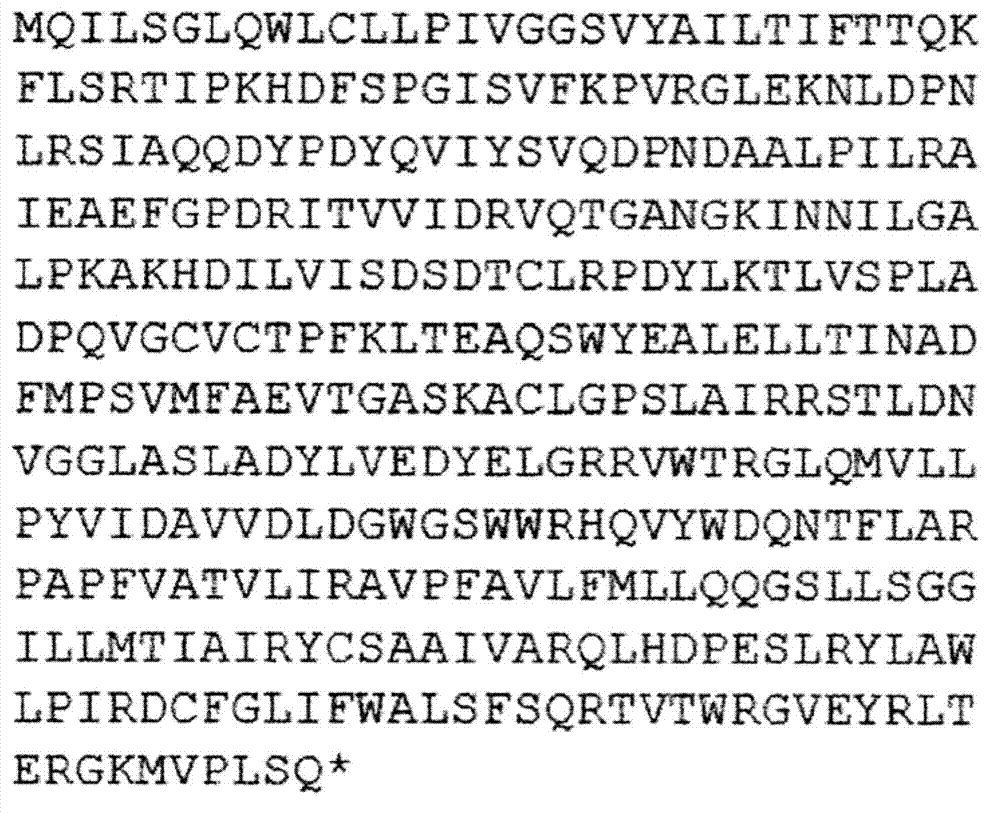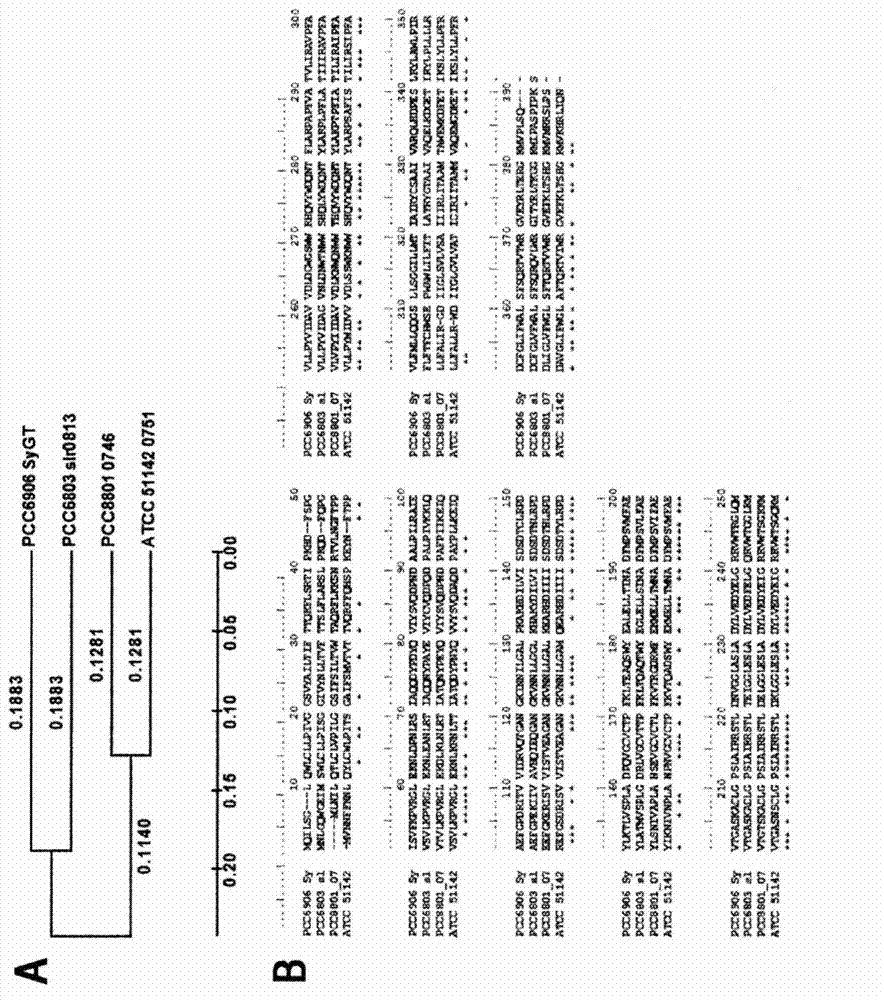Salt tolerance SyGT gene derived from synechocystis, and uses thereof
A technology of cyanobacteria and salt tolerance, applied in the field of salt tolerance SyGT gene derived from cyanobacteria and its application, can solve the problems such as not achieving significant results, and achieve the effect of high application possibility and increasing salt tolerance
- Summary
- Abstract
- Description
- Claims
- Application Information
AI Technical Summary
Problems solved by technology
Method used
Image
Examples
Embodiment 1
[0092] Example 1: SyGT gene derived from Synechocystis sp. PCC6906
[0093] The base sequence of the SyGT gene derived from Synechocystis PCC6906 was isolated and determined after the genome of Synechocystis PCC6906 was isolated and all base sequence information was obtained using GS-FLX (Roche, USA). The SyGT gene consists of 1,149 nucleotides, encoding a 382 amino acid sequence ( figure 1 and 2 ). The amino acid sequence of the SyGT gene derived from Synechocystis PCC6906 and Synechocystis PCC6803slr0813 produced in freshwater reached 68% identity (identity), and the positive (positive) showed 83%, and its genetic relationship was the closest. In addition, genes of Cyanothece sp.PCC8801 and Cyanothece sp.ATCC51142 also showed a high genetic relationship ( image 3 ).
Embodiment 2
[0094] Example 2: Screening of SyGT Gene Transformation Vectors and Transformed Plants Derived from Synechocystis PCC6906
[0095] In order to obtain transformed plants, from PCC6906 genomic DNA, use primers 5'-gctctagaATGCAAATATTAAGCGGGTTGCAA-3' (SEQ ID NO.3, the Xb aI site is underlined) and 5'-gctctagaTTATTGGGAAAGGGGAACCA TCTT-3' (SEQ ID NO. .4, the XbaI site is underlined) After the SyGT gene was amplified, it was cut with restriction enzymes. The XbaI / XbaI site of the pHC21B vector was cut with a restriction enzyme, and the SyGT gene fragment was inserted therein, thereby preparing a nuclear transformation vector ( Figure 4 ). The plants introduced with the transformation vector are screened in a medium containing kanamycin as a selection marker. Using the primers of the SyGT gene in the screened plants, the insertion of the SyGT gene was confirmed by the PCR method. Furthermore, the expression level of the SyGT gene in each transformed plant was analyzed by real-time...
Embodiment 3
[0096] Example 3: Preparation of tobacco transformed with SyGT gene derived from Synechocystis sp. PCC6906
[0097] Reserve and sterilize T0 generation seeds from tobacco transformed plants introduced with SyGT gene derived from Synechocystis sp. , thus preserving the T1 generation seeds. Plants were obtained from the retained seeds, and genomic DNA was isolated, and the introduction of SyGT was confirmed by PCR and Southern blot hybridization analysis, and total RNA was isolated, and the expression level of the introduced genes was confirmed by real-time quantitative PCR. Such as Figure 5 As shown in A, among the 21 kinds of SyGT gene-transformed tobacco plants, 14 kinds of transformants were confirmed to have introduced the gene, and in these transformed plants, it was confirmed that 4 kinds had inserted a copy of the gene ( Figure 5 B).
PUM
 Login to View More
Login to View More Abstract
Description
Claims
Application Information
 Login to View More
Login to View More - R&D
- Intellectual Property
- Life Sciences
- Materials
- Tech Scout
- Unparalleled Data Quality
- Higher Quality Content
- 60% Fewer Hallucinations
Browse by: Latest US Patents, China's latest patents, Technical Efficacy Thesaurus, Application Domain, Technology Topic, Popular Technical Reports.
© 2025 PatSnap. All rights reserved.Legal|Privacy policy|Modern Slavery Act Transparency Statement|Sitemap|About US| Contact US: help@patsnap.com



